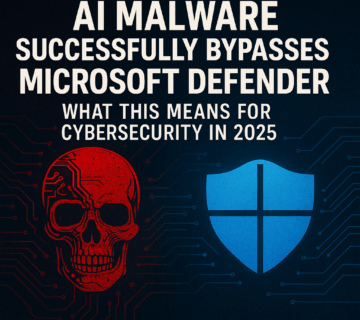
AI-Powered Malicious Apps Using Advanced Obfuscation to Evade Antivirus Detection
Mobile cybersecurity, highlighting a sophisticated Android malware campaign that leverages artificial intelligence for advanced code obfuscation. This malicious software disguises itself as legitimate package tracking services to trick users into granting permissions, subsequently harvesting sensitive data undetected. A key innovation involves the malware using AI to transform code into randomized Korean characters to evade traditional antivirus software, while also exfiltrating stolen information through compromised but trusted legitimate websites. The text concludes by emphasizing the inadequacy of standard security measures against these adaptive threats and promotes the comprehensive, multi-layered cybersecurity services offered by Technijian to combat such AI-powered mobile risks. ... Read More
